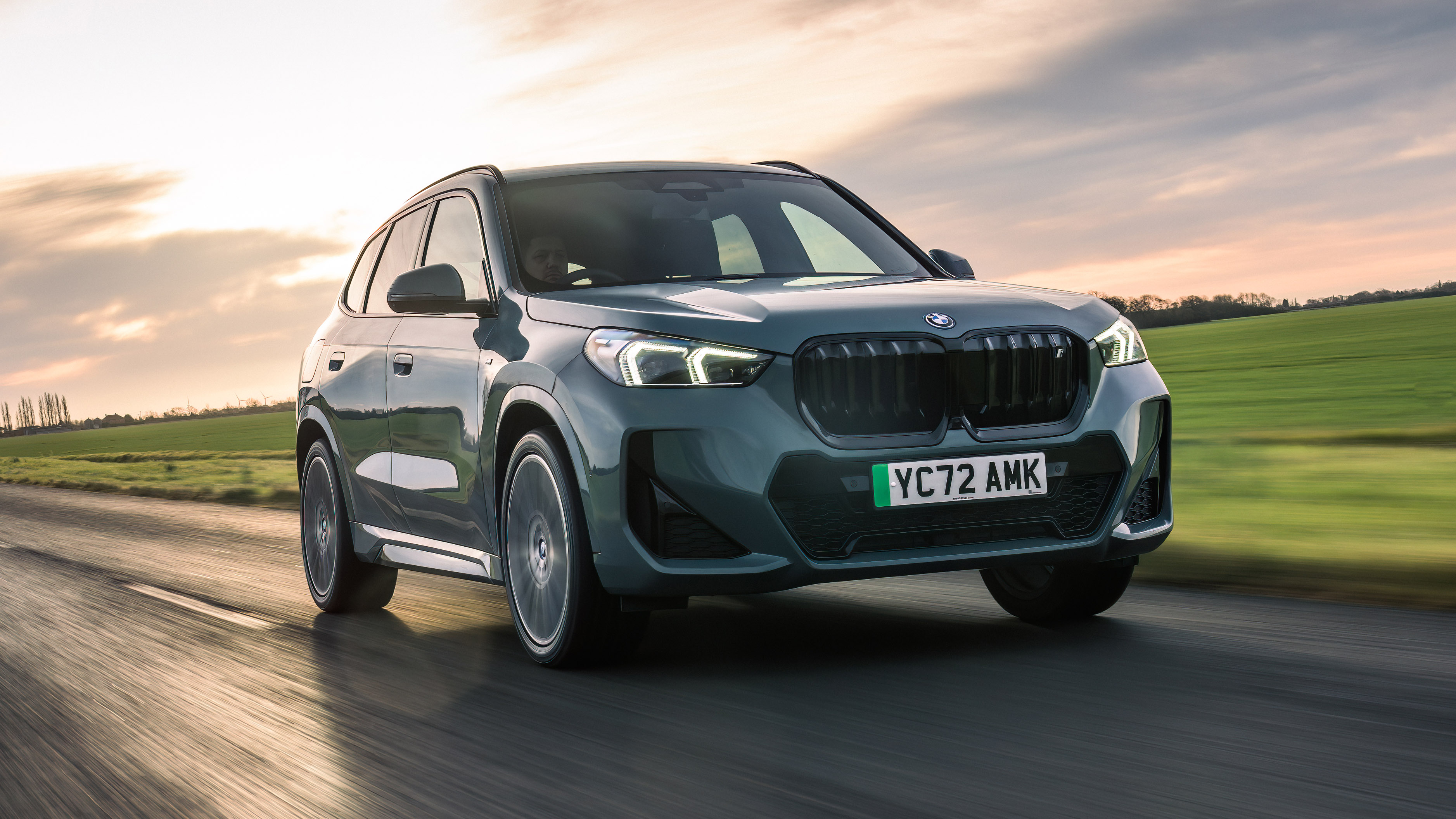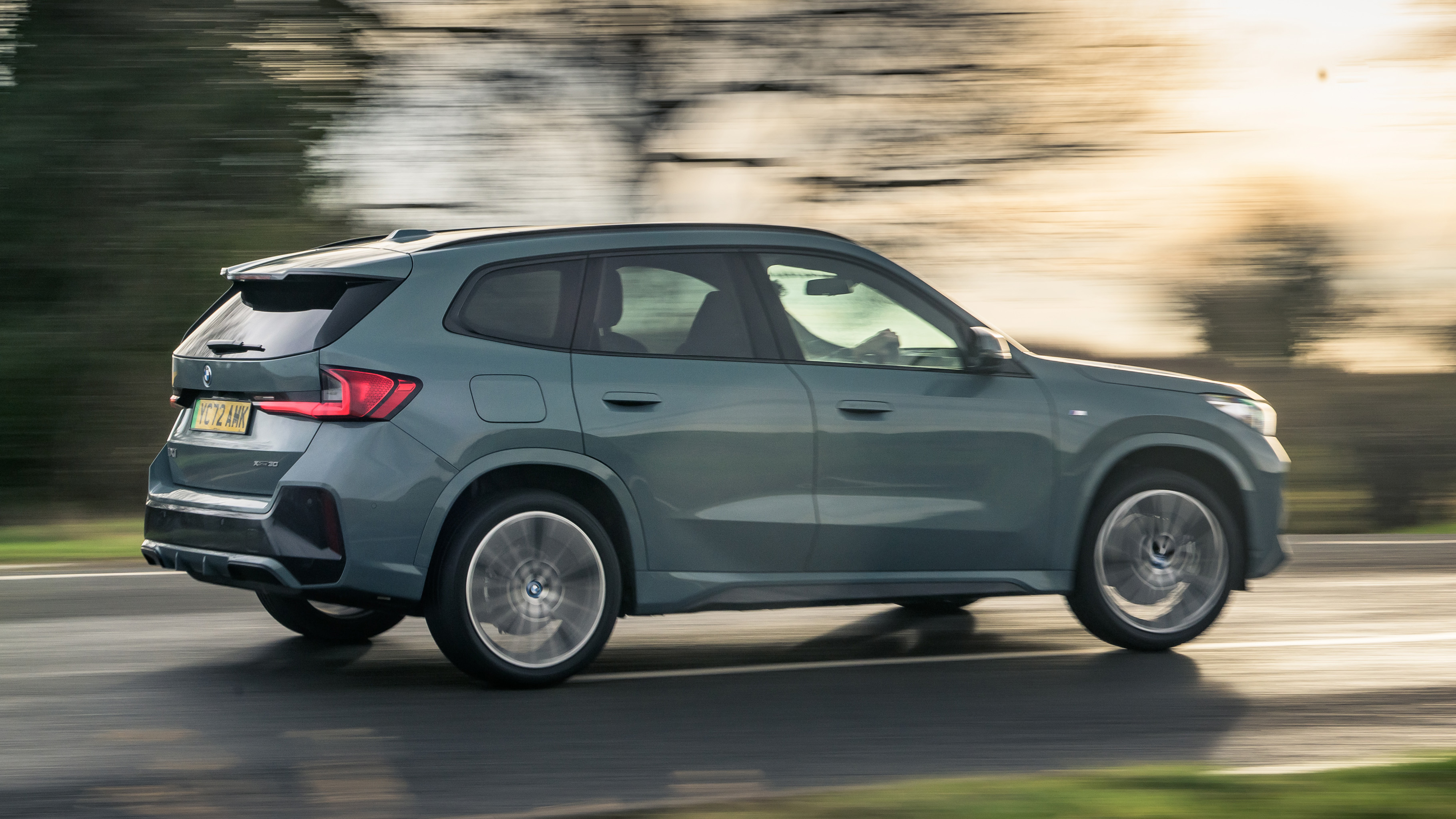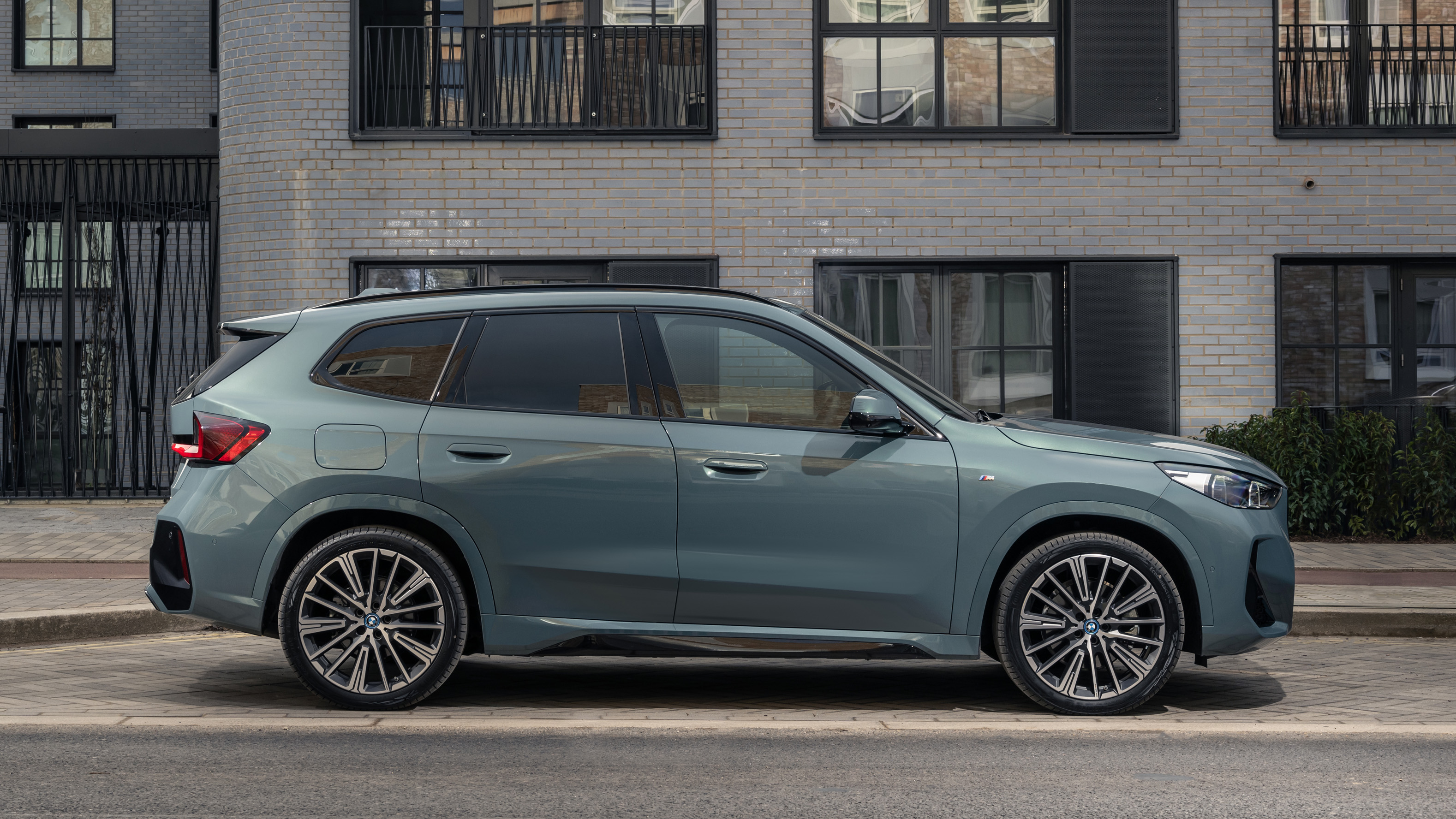
Wait, haven't you already driven this?
Yep. No. Kind of. Back in December we drove an 80 to 90 per cent complete, German-plated prototype on UK roads, but it’s only now that we’ve had a go in the fully finished version, so we thought you should hear our thoughts on, y’know, the one you can actually buy.
Great, but… it’s just yet another BMW SUV. Why should I care?
Because this is the all-electric version of the latest (third) generation of BMW’s smallest crossover. It follows BMW’s current strategy of offering all of its new cars with all of the powertrains – see the iX3, i4 and i7. So yes, you can also have petrol, diesel and plug-in hybrid flavours too. Click these blue words for the full TG review.
Rivals include the likes of the Audi Q4 e-tron, Mercedes-Benz EQA and Volvo XC40 Recharge to name but a few in an ever competitive market. No pressure.
What are the headline stats, then?
The iX1 gets a 64.7kWh battery mounted under the floor that provides up to 270 miles of range on a single charge. It can be recharged at speeds of up to 130kW too, meaning a 10 to 80 per cent top-up takes just 29 minutes.
There’s also BMW’s fifth-gen eDrive technology here, which means one motor on the front axle and one on the rear for four-wheel drive, a combined maximum output of 309bhp and a healthy 364lb ft of torque.
Does that make it fast?
It does. This may just be a small family crossover, but it’ll certainly shift. The 0-62mph sprint takes just 5.7 seconds (at least in Boost mode, activated via the left steering wheel paddle, which temporarily maxes power output) – the same as the xDrive30e, the most powerful PHEV in the lineup. Top speed is 112mph, and BMW has managed to get the drag coefficient down to 0.26 thanks to closed-off kidneys and some other aero trickery.
And it’s easy as you like to drive too, steering precisely enough, if a little lightly for our liking. Although the ride is reasonably firm it’s well controlled with bumps not really bothering the cabin, while top spec M Sport models (as ours was) get adaptive suspension as standard to help smooth things out. Through twisty stuff body roll is kept to a minimum, and because the centre of gravity is down low it does seem to corner surprisingly well. Power is equally split between the two motors, but it can be shifted to the front or rear as necessary.
We did notice a fair amount of road roar at higher speeds, particularly so equipped with the optional 20in tyres ours was kitted out in. Best avoided, we reckon. In around 5°C temperatures, we averaged 2.8mi/kWh over the course of 120 miles, taking in both stop/start traffic London traffic and higher motorway speeds, with a full charge indicating 218 miles. Expect to see slightly better once the weather warms up.
What drive modes are there?
This may just be a crossover, but BMW has given it SIX different drive modes to adapt it to your liking. The first three are self-explanatory – Personal, Sport and Efficient. The next three are new ‘My Modes’ that BMW calls ‘Expressive’, ‘Relax’ and ‘Digital Art’. Right.
These modes give you strange graphics on the screens in front of you and change the ‘engine sound’ to different characters created by two-time Academy Award-winning film score composer Hans Zimmer. All sounds great, but we briefly tried ‘Expressive’ mode and it sounded like driving through a horror film – and somewhat strangely didn’t mute the radio either. Spooky, and resulted in a speedy change back to Efficient.
Top Gear
Newsletter
Thank you for subscribing to our newsletter. Look out for your regular round-up of news, reviews and offers in your inbox.
Get all the latest news, reviews and exclusives, direct to your inbox.
In day-to-day driving, the iX1 defaults to its adaptive regenerative braking mode, which uses the nav and sensors to decide how much regen you need every time you lift off the throttle. We found it a little bit unpredictable in the real world, but you can revert to normal regen mode through the central touchscreen – though we’d really have preferred paddleshifters to do the job – while there’s also a brake mode for one-pedal driving.
What’s it like inside?
Well, speaking of that central touchscreen, it’s part of BMW’s new-fangled ‘Curved Display’, which combines a 10.25-inch dial display and a 10.7-inch infotainment screen into one big unit – as you also find in the ICE X1.
However, while the touchscreen looks the part it’s less useful to use, largely due to the lack of physical switchgear – the most notable absence being the iDrive controller. Yep, while you get a couple of shortcut buttons and the temperature sliders are always present at the bottom of the screen, everything else, such as turning the heated steering wheel (!) and seats (and massagers) on/off, as well as adjusting fan speed, requires delving into the confusing array of icons in the touchscreen. Hmph.
The digital dials aren’t much better either – there’s no traditional circular dial design anymore, just a strange trio of options that we struggled to get comfortable with – even if you can customise it to show satnav, radio and such to your liking.
Oh dear. Anything else to report?
Between the front seats you get a floating centre console, reminiscent of the top-of-the-range iX, which is home to a couple of buttons such as the drive selector and audio volume, but the plastic arm propping it up makes you somewhat question the point. And who thought designing the wireless charging pad so that your phone faces out into the cabin – and therefore potentially hugely distracting to the driver – was a good idea?
There is some good news, in that it feels well-built and of usual quality, while there’s decent room for rear seat passengers without the usual EV problem of a ridiculously high floor hiding the battery pack. That means you can slide your feet under the front seats and your knees aren’t perched up by your ears. The boot itself is also only 50-litres smaller than the internal combustion-engined X1, but that has grown for this generation so the iX1’s cargo space is actually the same as the in second gen X1’s at 490 litres. And there’s still space under the boot floor for any dirty charging cables. Handy.
How much does it cost?
Prices start from £53,295 in xLine trim or £56,045 in M Sport trim (that compares to £36,340/£39,090 respectively for the comparative internal combustion-engined model), which puts it roughly on par with rivals.
Trim differences? Well, xLine brings with it 18-inch alloy wheels, black plastic cladding on the bumpers and wheel arches, plus those little 'look at me, I’m an EV' blue accents. If you’re after slightly more subtlety, range-topping M Sport brings with it 19-inch alloy wheels, colour-coded trim and adaptive sport suspension: we’d choose it for the better suspension alone.
Anything else I need to know?
BMW reckons the iX1 will make up 66 per cent of new X1 sales across this car’s lifecycle in the UK, with PHEVs a further 14 per cent and internal combustion just 20 per cent in total, and based on our experience, that’s good news.
The iX1 is the best of the bunch no doubt, with its swish and accomplished electric powertrain in stark comparison to the slightly underwhelming internal combustion engine variants. Just a shame about those interior own goals.
Featured







